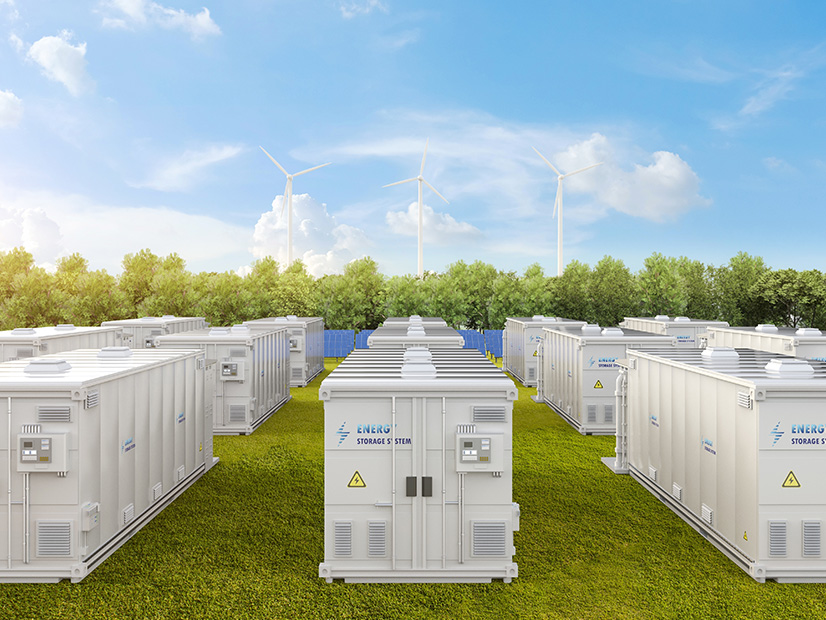Pennsylvania regulators last week unanimously approved a policy statement that offers proposed guidelines for when electric distribution companies (EDCs) can use storage as distribution system resources.
In a joint statement during the Aug. 24 commission meeting, Pennsylvania Public Utility Commission (PUC) Chair Gladys Brown Dutrieuille and Vice Chair Stephen DeFrank said technological advancements have allowed batteries to become viable energy resources and nonwire alternatives when planning the grid.
“Electricity distribution systems are changing quickly. Distribution energy resources are interconnecting at an almost exponential pace. Electric vehicle adoption continues accelerating. Data centers are establishing themselves in various EDC territories, demanding remarkable amounts of power,” the statement reads. “These factors, among others, have significantly altered the dynamics of managing the distribution grid. It is apparent that energy storage may offer EDCs a tool to better manage these new dynamics. Energy storage can provide grid stability through services such as peak demand shifting, supplemental power, restoration and voltage support.”
The policy statement said the majority of the comments the PUC has received urged against a narrow definition of when storage could be used at the distribution level, in large part owing to the still-evolving technology. The commission encouraged EDCs to implement storage when it can be cost-effectively used to “maintain or to increase the reliability or the resilience of the electric distribution system.”
The commission also declined to adopt a specific cost-effectiveness test and instead take a more individualized look at projects, saying EDCs may consider storage in cases when expense is similar to other traditional upgrades. Potential benefits include peak demand shifting, supplemental power, restoration and voltage support, Dutrieuille and DeFrank said.
The policy statement follows two rounds of comments regarding the role storage can play on the distribution grid starting in December 2020, with over 30 commenters participating.
Utilities argued that storage could be used to provide capacity in regions far from transmission or that experience concentrated peaks in load, voltage support for distributed energy resources (DERs), reducing or delaying the need for transmission upgrades and to support derated facilities in a constrained area. Storage could also be used to provide reactive control and to mitigate short-term peaks on individual lines from electric vehicle charging or electrification.
Trade groups representing generators, including the Solar Energy Industries Association (SEIA) and PJM Power Providers, as well as the Industrial Energy Consumers of Pennsylvania, argued that states with structured markets like Pennsylvania should impose parameters on the use of storage on the distribution grid when the asset would be owned by a public utility. They argued that the storage would effectively compete with the energy, capacity and ancillary services sold into competitive markets.
Duquesne Light commented that cost and value should be differentiated, arguing that some cost-benefit tests may not capture the value of improved resiliency, clean energy delivery, reduced outages and less need for new infrastructure on private property. It said value should instead be compared to the cost and value of alternative solutions.
SEIA said EDCs should be required to compare the value of their proposals with those of private developers to determine if contracting with third parties could provide more cost-effective solutions, including existing portfolios of behind-the-meter storage. Consumer groups said storage should only be installed when benefits outweigh costs and that most issues would be best addressed by traditional distribution upgrades.
Stakeholders have 30 days to comment on the PUC’s proposed guidelines.
PUC Approves 3 Transmission Projects
The commission also approved three transmission proposals from Mid-Atlantic Interstate Transmission (MAIT) to improve reliability in two regions and to interconnect a new 53.6-MW solar generator.
The company sought to construct a five-breaker ring bus at the Cly Substation in York County and construct 0.3 miles of new 115-kV line to loop the existing Middletown Junction-Roundtop 115-kV and the Middletown Junction-Smith Street 115-kV lines into the bus. It said the $942,000 project would increase reliability and reduce the potential for load loss.
Under the existing conditions, MAIT said, a single bus going offline could cut power to the distribution transformer and the 4,814 customers it serves. The project would prevent a single stuck breaker from disrupting more than two components in the new ring bus.
The company was approved to spend $665,000 to construct a 0.01 mile 115-kV bypass line on the Mansfield-Niles Valley line in Tioga County. The project would serve as an alternate feed to prevent a stuck breaker or maintenance from causing an outage for the 289 Penelec customers and around 6,381 Wellsboro Electric customers the line serves.
The commission also approved a 0.09 mile loop connecting the Hunterstown-Lincoln line to MAIT’s proposed Riley Substation in Adams County, which would serve the 53.6-MW solar generator being planned by Adams Solar.




